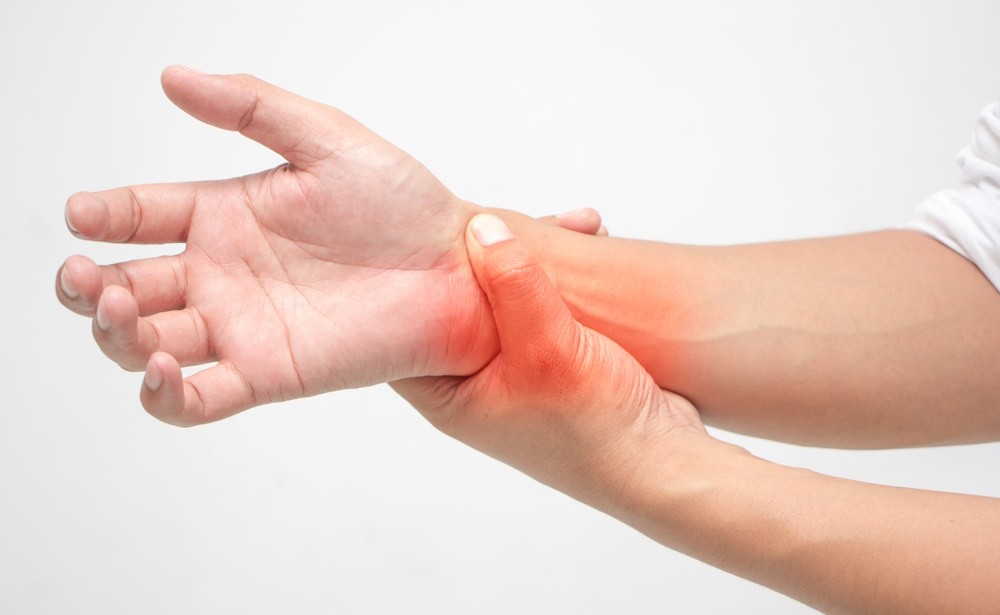How to Get Orthopedic Treatment for Chronic Diseases That Cause Joint Pain and Reduced Mobility
Musculoskeletal conditions and joint pain are often associated with aging, physical injuries, and competitive sports injuries. However, these discomforts may also be symptomatic of underlying medical conditions and diseases that affect the musculoskeletal system.
Determining the source of a musculoskeletal condition is critical because it dictates the method of orthopedic treatment and which pain management tactics are used. Let’s explore some of the most common diseases that cause orthopedic issues and joint pain. Then, discover some of the primary treatment options used to treat musculoskeletal conditions brought on by disease.
#1 – Osteoarthritis
Osteoarthritis is a degenerative disease that causes a gradual breakdown of cartilage in the joints. It most commonly affects the knees, hips, and hands. When cartilage is diminished, bones rub against each other without the normal amount of cushion, resulting in pain, stiffness, and reduced mobility. Wrist and hand pain are quite common.
Because there is no cure for osteoarthritis, treatment methods boil down to pain management and behavioral modification to reduce symptoms. Common treatment methods include:
- Nonsteroidal anti-inflammatory drugs
- Exercise and physical therapy
- Diet modification for weight loss
In severe cases, your orthopedic physician may recommend arthroscopic surgery or total joint replacement surgery to eliminate pain symptoms and restore joint mobility.
#2 – Rheumatoid Arthritis
Rheumatoid arthritis is another incurable disease that causes musculoskeletal conditions. This autoimmune disease is characterized by the body’s immune system attacking itself, resulting in chronic inflammation of the joints, joint damage, reduced balance, ongoing pain, and joint deformities. Typically, the disease involves many joints at once, and is most common in the knees, wrists, hands, and feet.
Although there is no cure for rheumatoid arthritis, there are several treatment avenues that help mitigate symptoms and slow down the progression of the disease. Common treatment methods include:
- Nonsteroidal anti-inflammatory drugs
- Immunosuppressive drugs
- Anti-inflammatory medication and injections
- Steroids, such as prednisone
- Disease-modifying antirheumatic drugs
- Physical therapy
- Arthroscopic surgery
- Total joint replacement surgery
#3 – Gout
Gout is a form of inflammatory arthritis characterized by the accumulation of uric acid crystals in the joints, leading to sudden, severe bouts of pain, swelling, and redness. Gout most commonly affects the big toe, but it can also impact other joints such as the ankles, knees, and wrists.
Unfortunately, gout is difficult to diagnose because X-rays and lab tests must be performed while pain symptoms are at their worst. Pain symptoms indicate that there are uric crystals in the joint that can be detected.
Common treatment methods for gout include:
Nonsteroidal anti-inflammatory drugs
Oral or injected corticosteroids
Diet and lifestyle changes such as avoiding alcohol and red meat
Avoiding diuretics
At-home pain management techniques
#4 – Ankylosing Spondylitis
Ankylosing spondylitis is a chronic inflammatory condition that primarily affects the base of the spine, pelvis, hip joints, shoulder joints, and the cartilage between the ribs and the breastbone. Medical experts believe that people who possess the HLA-B27 gene are at the greatest risk.
Typically, the first wave of symptoms are back pain and stiffness. Over time, it’s possible for individual vertebrae that compose the spine to fuse together, resulting in a permanent change in posture.
There’s no known cure for this musculoskeletal condition; however, there are several avenues of orthopedic treatment that will help manage pain and discomfort, including;
- Nonsteroidal anti-inflammatory drugs
- Tumor necrosis factor (TNF) blockers
- Interleukin-17 (IL-17) inhibitors
- Janus kinase (JAK) inhibitors
- Physical therapy
Although surgery is not typically used to treat ankylosing spondylitis, patients experiencing severe joint pain or who have damaged joints may benefit from it. Surgery is the most aggressive form of orthopedic treatment, so using it to treat ankylosing spondylitis must be evaluated on a case-by-case basis.
How to Get Treatment for Diseases That Cause Musculoskeletal Conditions
It’s crucial to recognize that orthopedic issues such as wrist and hand pain may be an early indicator of an underlying disease. Early diagnosis and appropriate management of these conditions are essential to prevent further joint damage, retain mobility and function, and sustain overall health.
If you’re experiencing persistent joint pain or discomfort, make an appointment with an orthopedic physician so they can examine the affected area. During your first appointment, they will collect your medical background, perform an examination, and determine the root cause of your musculoskeletal condition. Getting a proper diagnosis is crucial when developing orthopedic treatments and deciding which pain management tactics will be most effective.
To arrange your initial exam and consultation, contact the scheduling department at Mid-America Orthopedics today by calling (316) 630-9300. For the convenience of our patients, we can typically schedule same-day or next-day appointments. We can also be reached via the contact form on our website.

